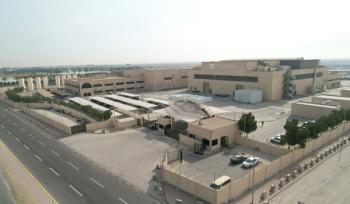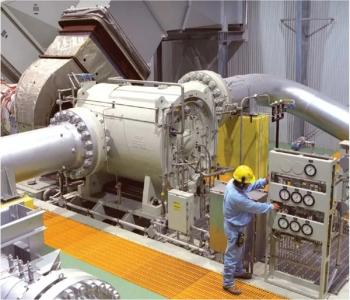
SURGE PROTECTION BEYOND SYSTEM LIMITS
A THERMODYNAMIC AND AEROMECHANICAL MODEL-BASED UPGRADE CAN BE
ACCOMPLISHED IN A RE-INJECTION COMPRESSION STATION
By MASSIMILIANO DI FEBO, PASQUALE PAGANINI & GIACINTO DI MANGO
Centrifugal compressors are a major component within process plants, having a critical impact on capital investment. During operation centrifugal compressors may be subjected to surge phenomenon, which consist of a rapid oscillation of the mass flow accompanied by noise and vibration. During a surge, the flow is suddenly reversed from discharge to suction. This reverse flow through the compressor causes high mechanical stresses on internal components. It is an abnormal operative condition, which can eventually lead to failure of the compressor.
Traditional system
Current protection methods seek to run the compressor far from surge points. They provide a protection method consisting of an anti-surge valve located on a line that recycles the gas from the discharge to the compressor suction; and antisurge protection logic based on the surge limit line (SLL) and surge control line (SCL). The SCL is usually calculated with a 10% flow safety margin from the SLL (Figure 1).
Figure 1: Traditional antisurge system[/caption]
By partially or completely opening the valve, the antisurge protection and control system reduces the overall line resistance and increases the flow, moving the compressor operative point to the right of the characteristic curve corresponding to the operative speed. Using field readings, the antisurge protection logic calculates the operative compression ratio β and uses the SCL data to determine the corresponding flow limit parameter. The value obtained is then used as a set point for the antisurge valve PID controller. The process variable is the flow parameter obtained from field readings. The SSL concept includes assumptions made for the sake of simplification. Therefore, it is a simplified correlation between the compression ratio β and flow parameter that identifies surge points.
Δp/Ps =K(β-1)
Δp: differential pressure at suction orifice
Ps: suction pressure
β: compression ratio
The applied simplifying assumptions allow for an equation independent from centrifugal compressor gas inlet conditions and gas mix composition. For this reason, the SSL is sometimes called invariant or universal, and provides results that are acceptable only when operative conditions fall within the range considered by the initial hypothesis. Instead when the compressor is working in heavy operative conditions, or with variable inlet conditions, these simplifications may not accurately predict surge points and therefore may not assure adequate protection.
It is possible to provide a surge protection system (SPS) that can extend protection beyond system limits. SPS embeds a dedicated gas thermodynamic and compressor aero-mechanical model that allows prediction of compressor performance and surge points at every operating condition under variable inlet pressures, temperatures and gas mix compositions. This makes it possible to configure gas mix compositions using the 20 most common hydrocarbons. Such information can be provided to the system through an inline dedicated instrument, such as a gas chromatograph, or offline. Thus the SPS determines compressor performance under actual operating conditions and identifies possible deviations from expected or design performance. It then uses this data for generation of diagnostic messages.
This approach is especially suited to heavy duty applications, such as high-pressure ranges, or processes with time-varying input conditions, i.e., variable gas composition, or variable inlet temperature or pressure. This SPS architecture includes a Calculation Server Unit (CSU) to continuously calculate compressor performance in real time. This includes surge points based on actual inlet conditions. For complex compression station configurations, it can embed load sharing, station recycle control, delivery pressure control, suction header control and other factors. An upgrade to a traditional SPS would consist of a software module inside the Control PLCs plus the installation of a new panel for thermodynamic and compressor modeling calculation. This model-based control system predicts compressor performance and surge points at every operating condition. Unlike traditional systems, it does not employ a simplified approach to approximate surge conditions. Instead, it enables accurate surge point determination as well as providing the ability to perform real-time compressor diagnostics.
Authors: Massimiliano Di Febo is operation manager at IPC. IPC offers leading edge technical services and technology solutions for machinery, system, plant devices such as turbo machinery and relevant, compressors, pumps and relevant monitoring, control and protection systems.
Pasquale Paganini is technical manager at IPC, which has developed the patented IPC SPS system powered by Cmap software.
Giacinto di Mango is an engineer at IPC. For more information, visit www.ipc-eng.com
Newsletter
Power your knowledge with the latest in turbine technology, engineering advances, and energy solutions—subscribe to Turbomachinery International today.




